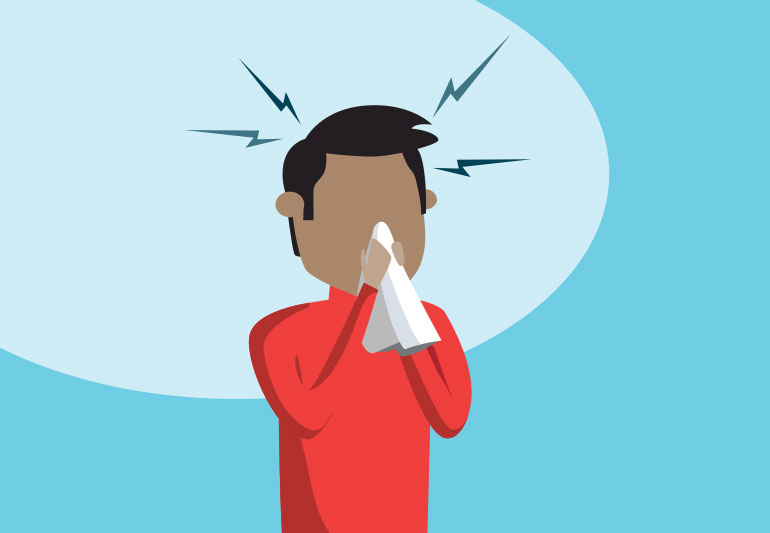Nasal polyps are fleshy swellings that develop in the lining of the nose and paranasal sinuses, the air-filled spaces that are linked to the nasal cavity. They are non-cancerous growths.
Polyps vary in size; they may be yellowish-brown or pink and are shaped like teardrops. As they grow, they eventually look like grapes on a stem.
Polyps may grow in one or both nostrils at the same time; they can grow on their own or in clusters.
Large polyps or clusters can cause breathing difficulties and can affect the patient’s sense of smell. They may block the sinuses and cause problems, such as regular infections.
Nasal polyps affect an estimated 4-40 percent of the general population, and they seem to be 2-4 times more common in males than females. People who develop them tend to do so as young or middle-aged adults.
Individuals with asthma, frequent sinus infections, and allergies are more likely to develop them. Some children with cystic fibrosis may develop nasal polyps.
Fast facts on nasal polyps
Here are some key points about nasal polyps. More detail and supporting information is in the main article.
* Nasal polyps are much more common in men than women.
* Often nasal polyps do not present any symptoms, making it difficult to know exactly how common they are.
* Sometimes, nasal polyps can cause sleep apnea.
* Nasal polyps can arise at any age.
Symptoms
Individuals with nasal polyps tend to have chronic inflammation of the lining of the nasal passages and sinuses (chronic sinusitis).
If there are clusters or large polyps, the patient’s nasal passages and sinuses may be obstructed.
Some people with small nasal polyps may have no signs or symptoms; however, the following are common:
- Runny nose – this may be chronic, with the patient feeling as if they always have a cold.
- Persistent stuffy or blocked nose – in some cases, the patient may find it hard to breathe through the nose, causing sleeping problems.
- Postnasal drip – a feeling of mucus continually running down the back of the throat.
- Either no sense of smell or poor sense of smell – this may not improve after polyps are treated.
- Poor sense of taste – this may not improve after polyps are treated.
- Pain in the face.
- Headache.
- Snoring.
- Itchiness around the eyes.
- Obstructive sleep apnea (in severe cases) – this is a potentially serious condition where the patient stops breathing during sleep.
- Double vision (in severe cases) – more likely to occur if the patient has allergic fungal sinusitis or cystic fibrosis.
Risk factors
Risk factors include:
- Sensitivity to aspirin – people with an allergic response to aspirin or other NSAIDs (non-steroidal anti-inflammatory drugs) are more likely to develop polyps.
- Asthma
- Allergic fungal sinusitis – an allergy to airborne fungi.
- Rhinitis/Rhinosinusitis – an inflammation of the nasal passage and sinuses, typically lasting 12 weeks or more. This condition includes hay fever.
- Cystic fibrosis – a chronic disease that affects organs such as the liver, lungs, pancreas, and intestines.
- Churg-Strauss syndrome – a disease that results in the inflammation of blood vessels.
- Age – Nasal polyps can occur at any age, but young and middle-aged adults are more at risk.
Genetics – individuals whose parents have had nasal polyps have a higher risk of developing them.
Posted on May 5, 2023


